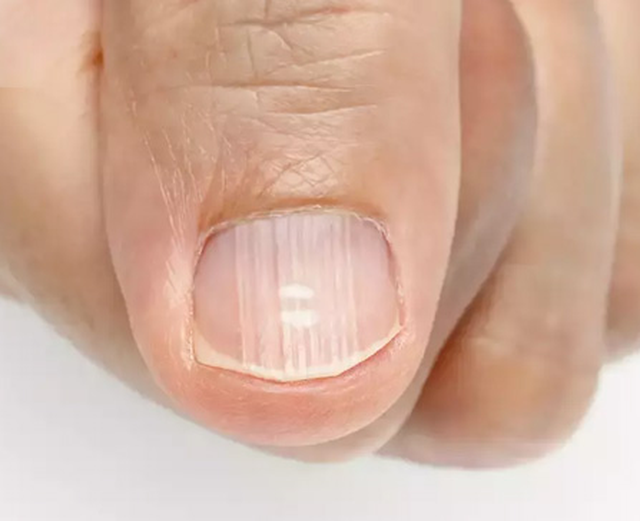Fingernails are known as the “barometer” of human health. Through the condition of your nails, you can learn a lot about whether your body is healthy or not. However, in real life, many people experience abnormalities in their toenails — especially vertical white lines, which can be a sign of illness.
A healthy person’s toenails are usually light pink, smooth, and free of streaks. In contrast, individuals with liver damage may experience reduced blood production, and the body’s ability to eliminate toxins is impaired, leading to changes in the appearance of the nails.

The lower limbs are prone to poor blood circulation, and if the blood supply is insufficient, the toenails may become weak and pale. If your toenails appear lighter in color or start to develop more vertical lines over time, you should see a doctor as soon as possible for a check-up.
In addition to liver-related issues and poor circulation, vertical lines on toenails — also known as longitudinal ridges — may also indicate nutritional deficiencies, particularly in iron, zinc, or vitamin B12. These nutrients are essential for healthy nail growth and cell regeneration. Chronic stress, aging, or dehydration can also contribute to the appearance of these ridges. In some cases, fungal infections or underlying conditions like thyroid disorders, anemia, or even autoimmune diseases can affect toenail health. Monitoring your toenails regularly and noting any changes in color, shape, or texture can provide early warning signs of internal health problems. Maintaining a balanced diet, staying hydrated, and practicing proper foot hygiene are simple yet effective ways to support nail health.